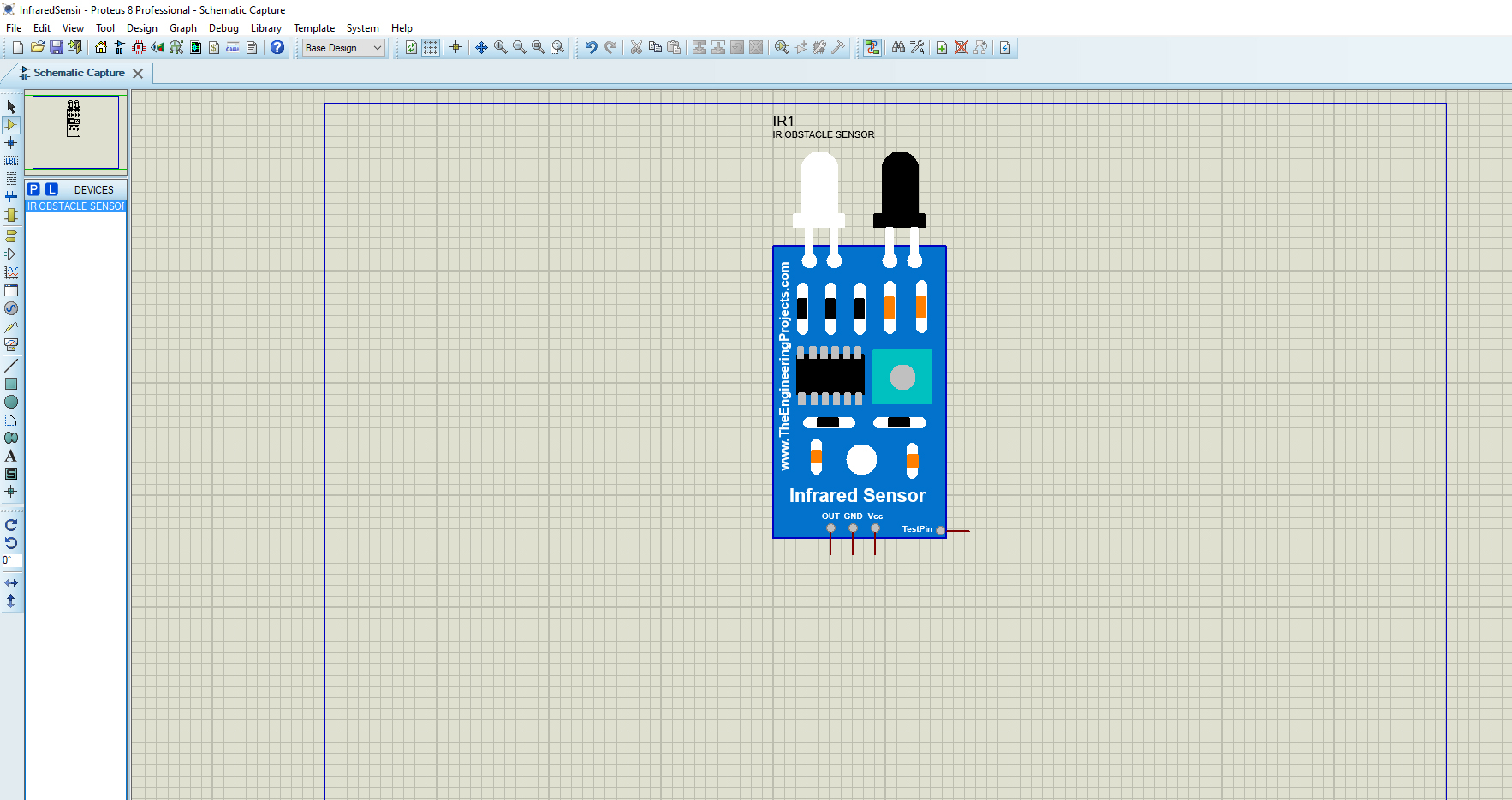

The sensor constitutes of an IR LED and an IR photodiode. The working of IR sensors in the basic sense is similar to that of ultrasonic sensors because both of them involve a transmitter and receiver. When the emitted IR radiations fall on the photodiode, it produces resistance and voltage which is in proportion to the radiations fell upon. The emitter emits infrared radiations which after hitting some object receives by the detector photodiode is sensitive only to the radiations of the infrared region. One is RED led which performs the function of the emitter and the other one is photodiode which works as a receiver. At the end of the module, there are two LEDs. The human eye cannot detect IR radiations but to IR sensor these radiations are visible. From 3 micrometer to 6 micrometer lies mid-infrared region and higher than 6 micrometer is a far-infrared region.

The range of near-infrared is between 0.7 and 3 micrometers. IR spectrum can divide into three regions namely near-infrared, mid and far-infrared region. The range of these waves is between 0.7 micrometers and 100 micrometers.

In the electromagnetic spectrum, IR radiations lie in the visible and microwave region. Since the IR sensor uses low power that makes them user-friendly and uses widely. For example in the TV remote, IR technology is used for the communication between the TV and it’s remote allowing the user to have a level of comfort by controlling the TV from a fair amount of distance rather than manual labour. IR technology is widely used in industries and our daily life. Sensors capable of working with that region of light are IR sensors. In order to be able to interface IR sensor with Arduino, it is necessary to understand what IR sensor actually is. In this tutorial, we’ll interface the IR sensor with Arduino Uno including coding, connection diagram, and listing the components. ( 3) To make Line Following Robot and detection of object, IR sensor is best to use in such situation


 0 kommentar(er)
0 kommentar(er)
